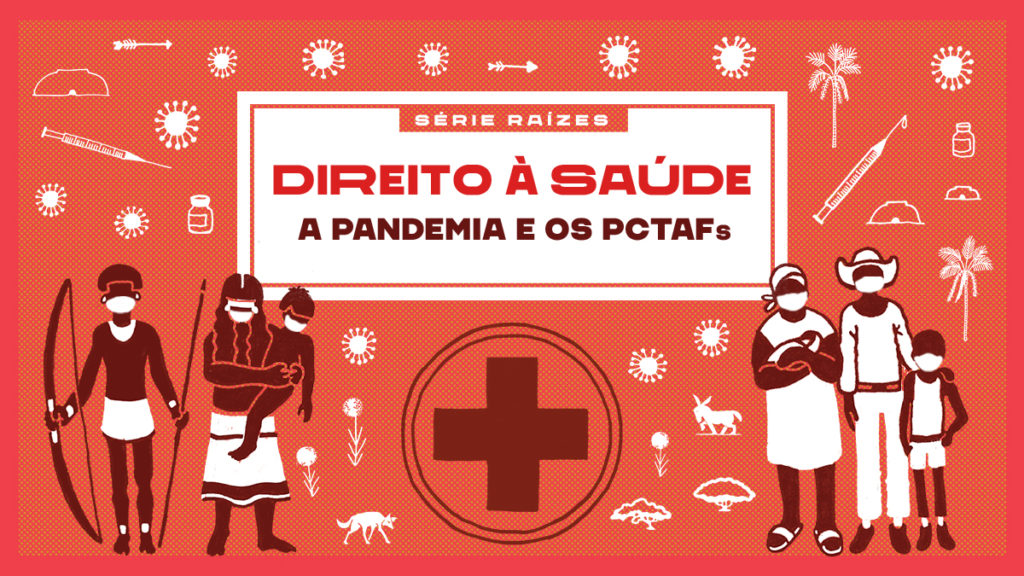Vaccination plan leaves communities on the margins of unprecise measures

An unprecedented survey in the Cerrado reveals that there are 3,5 times more peoples than official data shows; gap puts thousands of people’s lives at risk
The covid-19 vaccination plan presented by the federal government does not contemplate the totality of the Brazilian population. This is because mapping conducted in areas of the Cerrado by the Amazon Environmental Research Institute (IPAM) initiative, alongside the Institute for Society, Population, and Nature (ISPN), in partnership with the Cerrado Network, reveals the existence of 3,5 times more peoples and traditional communities that what the official data shows. The number, although not comprehensive, suggests a nationwide problem.
More than 2300 communities were counted by these organisations through workshops and dialogues with the local population in the region of Matopiba (Maranhão, Tocantins, Piauí, and Bahia). At the moment, the official database accounted for only 667 communities, in the region analysed. Started in July 2018, the survey considered areas that have a significant environmental conservation importance, known as ecological “priority corridors”.
First inline
Indigenous people living in villages, quilombola, and Ribeirinho traditional communities are priority groups in the vaccination efforts against Covid-19, already underway in Brazil. By explicitly naming these three segments, Law no. 14021/20 leaves an additional 25 traditional peoples and communities – a number corresponding to the segments represented in the National Council of Traditional Peoples and Communities (CNPCT), which still doesn’t encompass the totality of these populations – marginalised by an ill-defined plan to begin with.
At the end of January 2021, the Federal Public Ministry questioned the Health Ministry about the selection criteria and requested more precision in identifying which peoples and communities will be included in this emergency phase. Despite vaccinations having already started in some indigenous villages in Pará, for example, the plan does not set out deadlines and guidelines to create a state-wide strategy focused on different population segments, facing an immunisation-void scenario.
“This lack of clarity and precision emphasises the urgent need to map and make visible so many other segments scattered across Brazil. Communities living at the margins of official data and that need to be prioritised by protective policies and in public debates”, warns IPAM’s Science director, Ane Alencar.
About the mapping
The project mapping Traditional Peoples, Communities, and Family-scale Farmers has compiled information scattered across scientific literature and official data about the identification of these communities within the Cerrado biome. Furthermore, participative workshops were conducted in strategic municipalities in the Matopiba region, alongside community and local organisation representatives.
The result of this initiative revealed that traditional populations still struggle for their space on the map. The data makes clear the invisibility that permeates the existence of traditional peoples and communities, marginalised by public policies, thus favouring the entrenching of real threats, such as unorganised farming expansion and mining.
The initiative was supported by the Critical Ecosystem Partnership Fund (CEPF), a joint enterprise of the French Development Agency (AFD), Conservation International, the European Union, the Global Environment Facility (GEF), the government of Japan, and the World Bank.
A fundamental goal is to ensure the participation and involvement of civil society in the preservation of biodiversity.
Importance
On top of demonstrating the nation’s diversity, to reveal the existence of these traditional peoples and communities is fundamental to preserve the environment, especially in the Cerrado, a strategic biome in the safeguarding of biodiversity and water cycles in Brazil.
To guarantee the permanence of these peoples in their territories is to ensure what still remains of the Cerrado is left standing. With have of its native vegetation gone, the biome is home to 5% of the planet’s biodiversity. Additionally, it contains eight of the twelve hydrographic regions of Brazil and supplies six of the country’s eight largest drainage basins.
